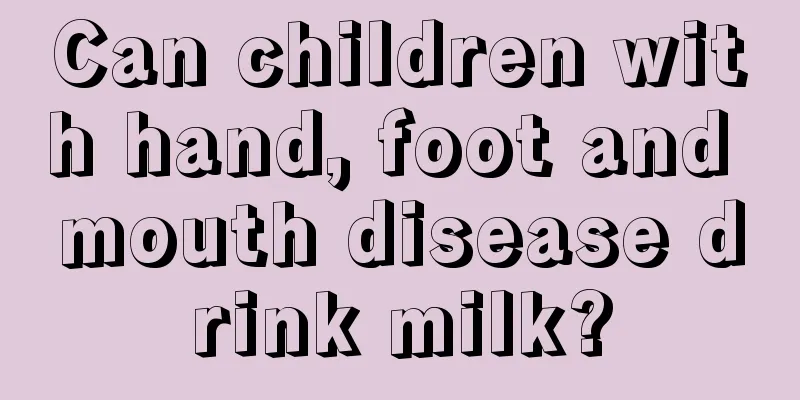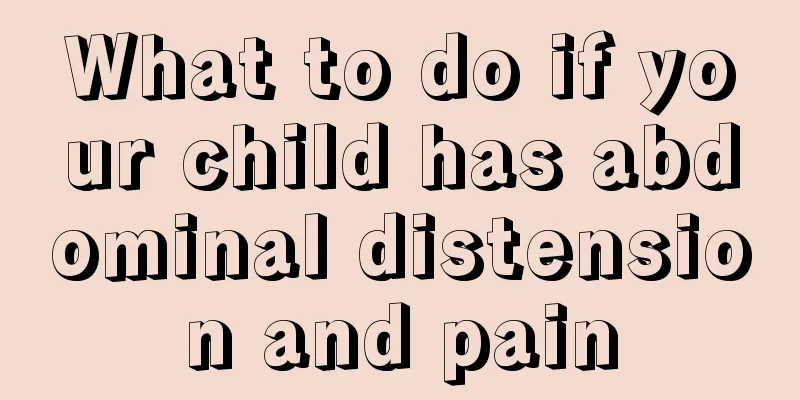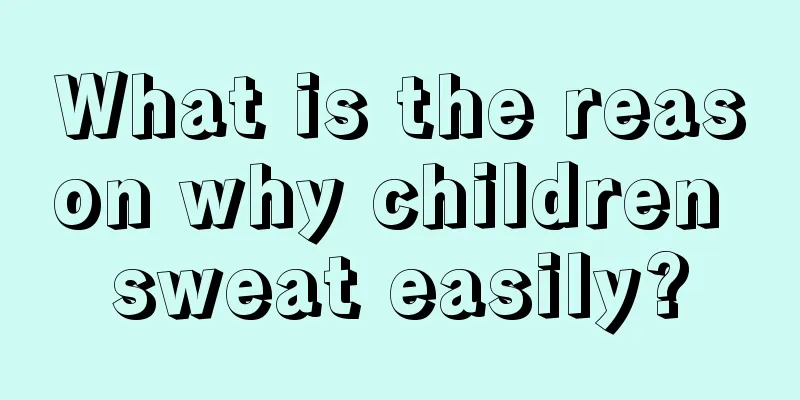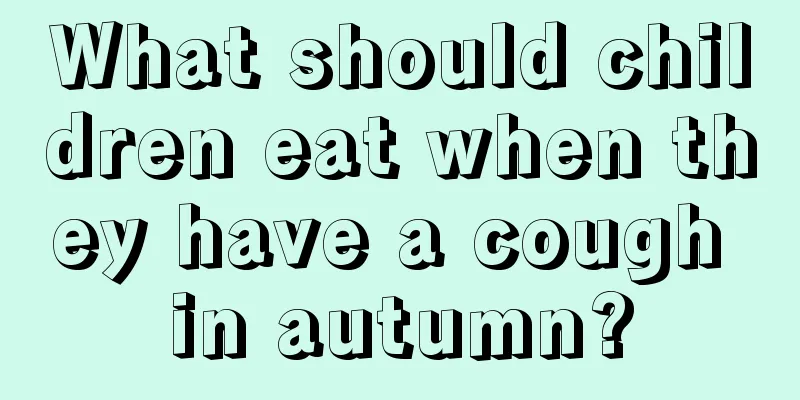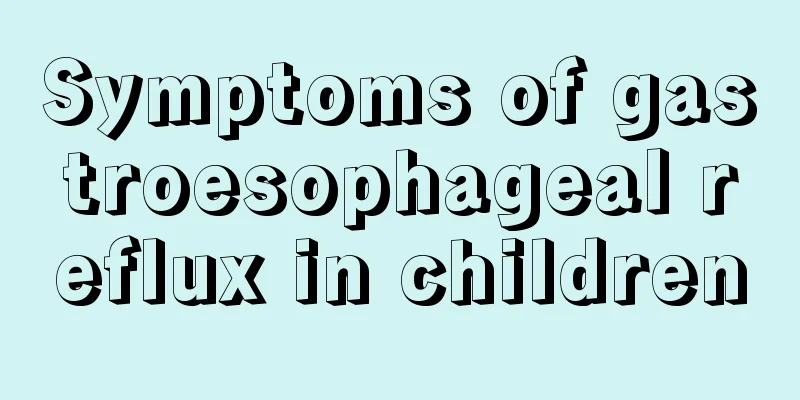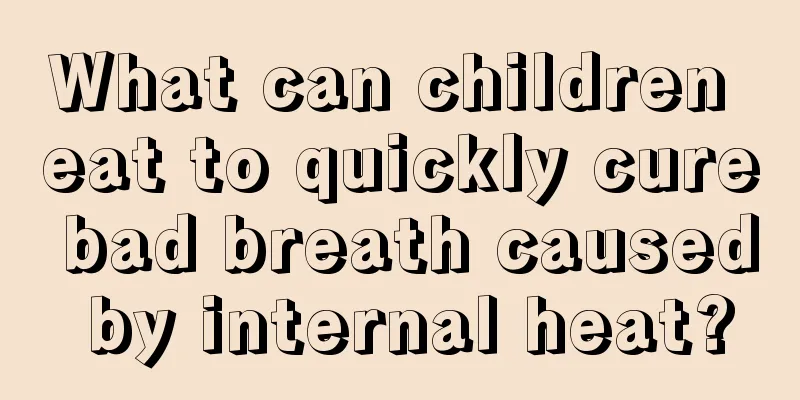Viral enteritis in a one and a half year old baby

|
The health of children is what parents are most concerned about. Newborn babies have just come into this world from their mother's body. They have poor body resistance and are not yet able to resist viral invasion. They often face the trouble of diseases. The gastrointestinal functions of many children are not yet perfect. Once they eat unclean food, they are prone to viral enteritis. So what should you do when a one and a half year old baby is infected with viral enteritis? Causes of gastroenteritis Children under five years old often suffer from vomiting and diarrhea in autumn and winter. This is mostly due to rotavirus gastroenteritis. Rotavirus is the most important cause of acute gastroenteritis in children, accounting for 5–10% of all pediatric gastroenteritis and 10–50% of hospitalizations for diarrhea. Common routes of infection for gastroenteritis are eating unclean food or drinking contaminated water, or having close contact with sick people. Causes of gastroenteritis in children: Children are at higher risk of contracting the disease due to their lack of immunity and relatively poor hygiene. Although there are a large number of other pathogens that can cause gastroenteritis in children, their incidence is significantly lower than that of bacterial and viral pathogens. 1. Viral infection Viruses that commonly cause gastroenteritis include rotavirus, norovirus, adenovirus, and astrovirus. Rotavirus is the leading cause of gastroenteritis in children and occurs worldwide, in both rich and poor people. 70% of gastroenteritis in children is caused by viruses, but most adults are immune because they have been exposed to rotavirus. 2. Bacterial infection Bacterial infections account for 15% of gastroenteritis in children; the most common bacteria include Escherichia coli, Salmonella, Shigella, and Campylobacter jejuni. Children who are infected with gastroenteritis usually become ill after eating food contaminated by bacteria. Fruits, vegetables and foods that have been found to be contaminated include uncooked fresh meat, chicken, seafood, eggs, growing sprouts, unpasteurized milk, soft cheese, and fruit and vegetable juice. 3. Parasitic infection A variety of protozoa can cause gastroenteritis. The most common is Giardia lamblia, but infections with amebas and Cryptosporidium have also been reported. As a group of pathogens, they account for about 10% of the causes of gastroenteritis in children. 4. Infection Transmission can occur through drinking contaminated water or sharing personal items. It should be noted that feeding babies with bottles that are not properly sterilized can also cause infections. 5. Non-infectious Non-infectious gastroenteritis can also be caused by many factors. Some of the more common causes include: medications (such as nonsteroidal anti-infectives), foods (such as lactose - in people with intolerance), and gluten (in those with celiac disease). Some plants produce toxins during their growth process that can also cause gastroenteritis. For example, yew, morning glory and horse chestnut plants all contain toxins, and the young shoots produced by potato tubers are also poisonous. Treatment of gastroenteritis First of all, mild gastroenteritis can heal on its own without treatment. However, in daily life, acute gastroenteritis is the most common in children. Here are the treatment methods for acute gastroenteritis: 1. Pay attention to fluid replacement and avoid dehydration Pay attention to dehydration symptoms: whether the child urinates less (the baby needs fewer diaper changes), cries without tears, has dry and inelastic skin, or has a sunken fontanelle. Regardless of whether the child has received an IV drip or not, you can buy electrolyte water specifically for diarrhea and give it to your child to drink as water. An IV may be necessary if a child's level of consciousness is decreased or if dehydration is severe. But oral rehydration therapy is still a good way to replenish fluids. Drinks high in simple sugars, such as soda, fruit juice, etc., are not recommended for children under 5 years old because they may worsen diarrhea. If there is no special oral rehydration solution or it tastes bad, plain water can also be used. If indicated, nasogastric tubes can also be used in children to supplement fluids. 2. Pay attention to diet and continue breastfeeding Breastfed babies are advised to continue feeding as usual. Formula-fed infants should continue formula feeding immediately after ORT rehydration. You can try brewing it with half milk (i.e. diluting the concentration by half) first. If the diarrhea condition does not improve within 3-7 days, you may need to switch to lactose-free milk powder (i.e. commercially available laxative milk powder) under the doctor's instructions. 3. Antiemetics Antiemetic medications may help treat vomiting in children, but they must be taken as directed by your doctor. Ondansetron has some utility, with a single dose reducing the need for intravenous fluids, hospitalization, and vomiting. However, the use of ondansetron may be associated with an increased risk of hospital readmission in children. If clinically necessary, ondansetron can also be administered orally in the intravenous form. Metoclopramide may be effective. 4. Antibiotics Antibiotics are not routinely used for gastroenteritis but may be recommended if symptoms are particularly severe or if a susceptible bacterium is identified or a bacterial infection is suspected. The World Health Organization (WHO) recommends that antibiotics be used for children who have both blood in their stools and a fever. 5. Antidiarrheal drugs Do not use antidiarrheal medicines in children—they may be dangerous. Antidiarrheal drugs have a theoretical risk of complications, although clinical experience suggests that this is unlikely, and are not recommended in cases of diarrhea with blood in the stool or fever. Loperamide is an opioid analog commonly used for the symptomatic treatment of diarrhea. However, loperamide is not suitable for use in children because the drug may cross the immature blood-brain barrier in children and cause toxicity. Children's gastroenteritis is much more complicated than adult gastroenteritis, so be sure to see a doctor. Indicators of hospitalization for gastroenteritis in children If a child has a persistent high fever for more than 48 hours, accompanied by vomiting, severe diarrhea, and more than 10 diarrhea episodes a day, he or she should be hospitalized. In addition, if diarrhea leads to severe dehydration (significant weight loss and decreased urine volume), coupled with lethargy and loss of appetite, and treatment with medication and electrolyte solutions is ineffective, hospitalization is also required. |
<<: Symptoms of sleep disorders in children
>>: What to do if your baby's palms and soles are hot when he is one year old
Recommend
Baby's nasal discharge is yellow and sticky
Many young parents pay special attention to their...
How to Improve Children's Memory
For children, no matter what it is, we hope to st...
What causes yellow eyes in babies?
Babies are a relatively special group because the...
What are the white spots on the child's fingertips?
A child's normal fingertips should be shiny a...
What to do if your child has swollen lymph nodes
For many babies, the immune system is not yet ful...
What causes shortness of breath in children?
Shortness of breath is a common symptom among man...
How can babies prevent tooth decay?
Everyone’s childhood can be said to be the happie...
What should I do if my face is allergic after giving birth?
Giving birth is a daunting experience for many wo...
Treatment of yellow nasal discharge in babies
The baby's immunity is relatively weak. At th...
Diagnosis and analysis of ascariasis intestinal obstruction in infants
Mentioning ascariasis intestinal obstruction shou...
One-year-old baby allergic cough
Allergic cough is a type of cough. This condition...
What to do if your newborn is breathing heavily
Newborns are a group that has just come into the ...
How many months does it take for a baby's head to take shape?
The baby's skull is very fragile. If he uses ...
Is it good for children to drink yogurt every day?
There is a common phenomenon now. As parents, we ...
Two months old baby has a cough
For two-month-old babies, their body resistance i...
